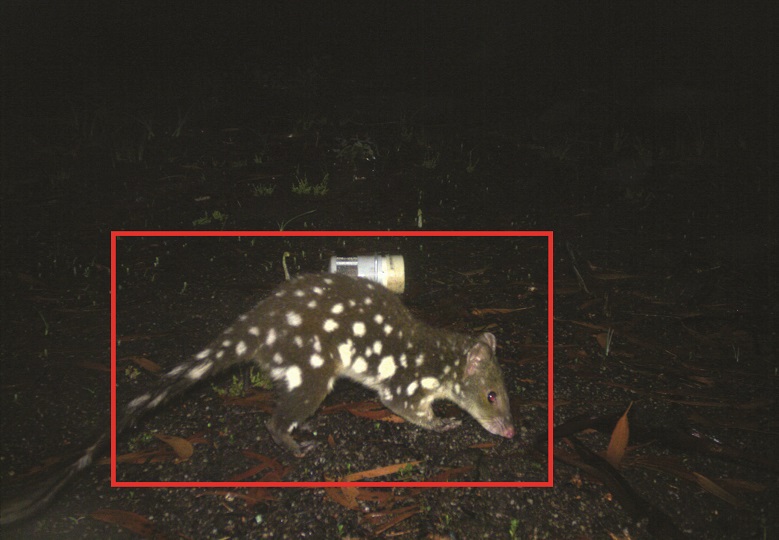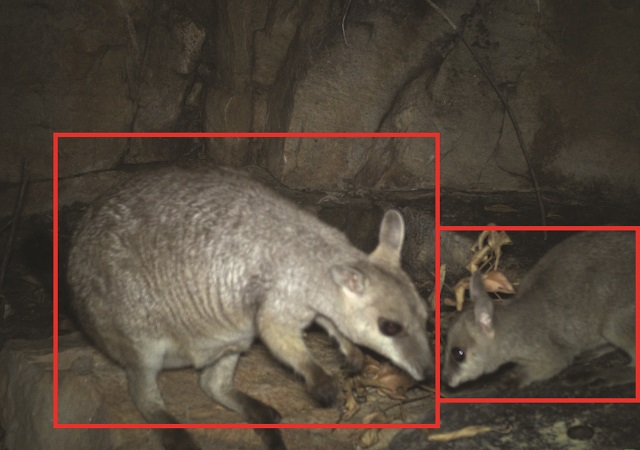By Damien Kerr, Chief Information Technology Officer and Lizzy Crotty, Development Executive, FoAWC
Australian Wildlife Conservancy is committed to reversing the decline of Australia’s threatened wildlife by taking practical steps to deliver effective on-ground management (i.e. fire management, feral animal control, weed eradication) informed by world-class science. Excitingly, AWC is now harnessing the power of a suite of innovative new technologies to inform and deliver conservation.
Camera traps are an essential tool for collecting data on species diversity and abundance, and enabling us to track and measure our progress on the ground. Traps are activated by motion sensors and record a huge number of images; a three-month survey can capture more than 500,000 photos. Around 60 per cent of these images are set off by non-animal motion such as leaves blowing in the wind, making camera traps both a boon and a bane for AWC ecologists, as every image has to be checked manually. Important metadata such as temperature, time and moon phase, also have to be recorded on each capture, making the process extremely labour intensive.
AWC has been investing in strategies to increase our efficiency in processing camera trap images and launched the AWC Artificial Intelligence (AI) Program in 2019, in partnership with Microsoft. Microsoft describes our relationship as a “true collaboration” – AWC is the only partner they have worked with which actively codes alongside its team, and one of only three global partners using the advanced AI toolset in this way.
 © AWC camera trap
© AWC camera trap
AWC’s investment in the development and application of technology for conservation is breaking new ground in our sector. The AI program is already proving to be incredibly effective, freeing up hundreds of hours for our ecologists and land managers to take more direct action in the field, and increasing the speed at which the team can identify the presence of threatened species and feral predators.
The AWC AI Program has successfully developed the Animal-Filtering model. This model is capable of identifying images triggered by non-animal motion with success rates well over 90 per cent and reduces the number of images that need to be processed manually by 60 to 70 per cent – an astounding gain in efficiency. As of August 2020, more than four million images (five terabytes of image data) have been put through this process.
AWC continues to chart new territory in conservation technology with construction of our first Species Classifier model. This machine learning technology has been ‘trained’ to identify common species in a specific area. As it was impractical to upload every single known species into the model, we chose to prioritise the 20 most commonly seen species on camera traps.
AWC has an extensive library of images due to decades of on-ground conservation work with some of Australia’s rarest and most threatened wildlife. In the north-east region, the Species Classifier model can identify 20 different species – including feral species – and can even pick up and identify multiple subjects in one frame. This process refines the resulting dataset from the AnimalFiltering model, by a further 80 to 90 per cent. AWC plans to eventually implement the software at sanctuaries across the country, adding further species to the Species Classifier model.
 © AWC camera trap
© AWC camera trap
AWC’s ultimate aim is to improve the model recognition capability until it can consistently and correctly identify species with a very high degree of accuracy. Our AI program is in a state of testing and trialling, and we have found it is particularly important to use high-quality training image sets to improve learning success. AWC ecologists are uploading hundreds of thousands of images for the AI output and metadata to analyse. When needed, the program can be corrected and tweaked to improve its capacity. The next step is to develop a model that can identify individuals based on their stripes or patterns.
Recognising the increasing importance of technology for improving outcomes for Australia’s wildlife, AWC is committed to growing our investment in conservation technology. Already the ‘returns’ are proving very worthwhile and are helping us deliver more effective conservation for Australia’s wildlife and habitats.
Read and download this full issue of Wildlife Matters here.
Help us harness conservation technology